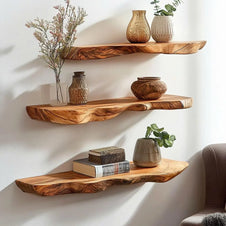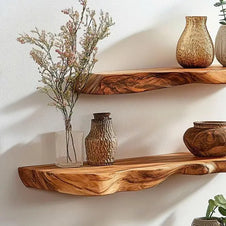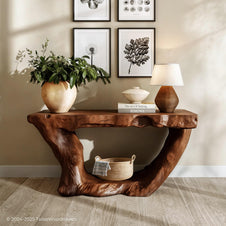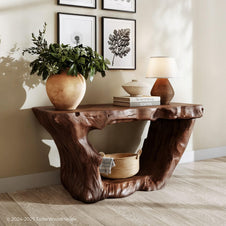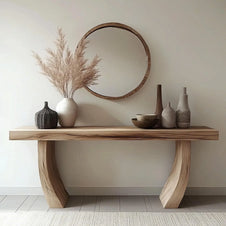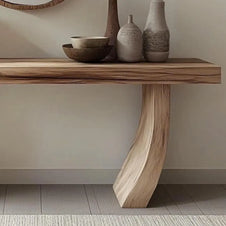Want the high-end look of a curated home? The secret lies in mastering your surfaces, and that starts with the floating shelf. These modern features demand intention, not randomness. This guide provides the foundational rules for balancing items, utilizing texture, and creating dynamic visual interest across every shelf. Whether you’re styling a single shelf or a full wall unit, you will learn the exact techniques for how to decorate floating shelves to achieve a flawless, professional result.
The Core Principles of Shelf Styling
To successfully learn how to decorate floating shelves, you must first understand the fundamental rules of composition. Ignoring these foundational principles is the main reason shelf displays end up looking unbalanced.
The Rule of Three (and Other Odd Numbers)
The easiest way to add visual appeal and interest to your display is to apply the rule of odd numbers. The human eye finds groups of three, five, or seven much more appealing than even pairs. When learning how to decorate floating shelves, always aim for small clusters of three items, like a book, a vase, and a small sculpture. This grouping looks intentional and balanced. If your shelf is long, use multiple small groups, perhaps blending a group of three with a group of five to properly fill the space.
Varying Heights
When learning how to decorate floating shelves, one common mistake is lining up items of the same height, which makes the display look flat and dull. A simple fix is to create visual triangles. To do this, group three items together and place the tallest one – like a vase – in the center or at the back, with two shorter objects, such as a stack of books and a candle, on either side. This arrangement helps the eye move naturally across the shelf, adding balance, flow, and visual interest instead of a stiff, horizontal line.
Layering for Depth
Because shelves are often shallow, adding depth is important to avoid a flat display. The best technique is layering: start by placing flat items, like framed art or mirrors, leaning against the back wall. Next, place medium items, such as books or small vases, in the middle. Finally, put small sculptural objects, like candles or figurines, in the very front. This transforms your display from a simple line of objects into a rich, three-dimensional look.
Using Negative Space
Many people try to fill every inch of their shelves, but that ruins the clean, modern look. Empty space is actually important – it helps your display look organized and stylish. The open areas, called negative space, let the eye rest and make each item stand out. When learning how to decorate floating shelves, remember to leave about one-third of the shelf empty. This simple rule gives your shelves breathing room and turns a cluttered setup into a calm, curated display.
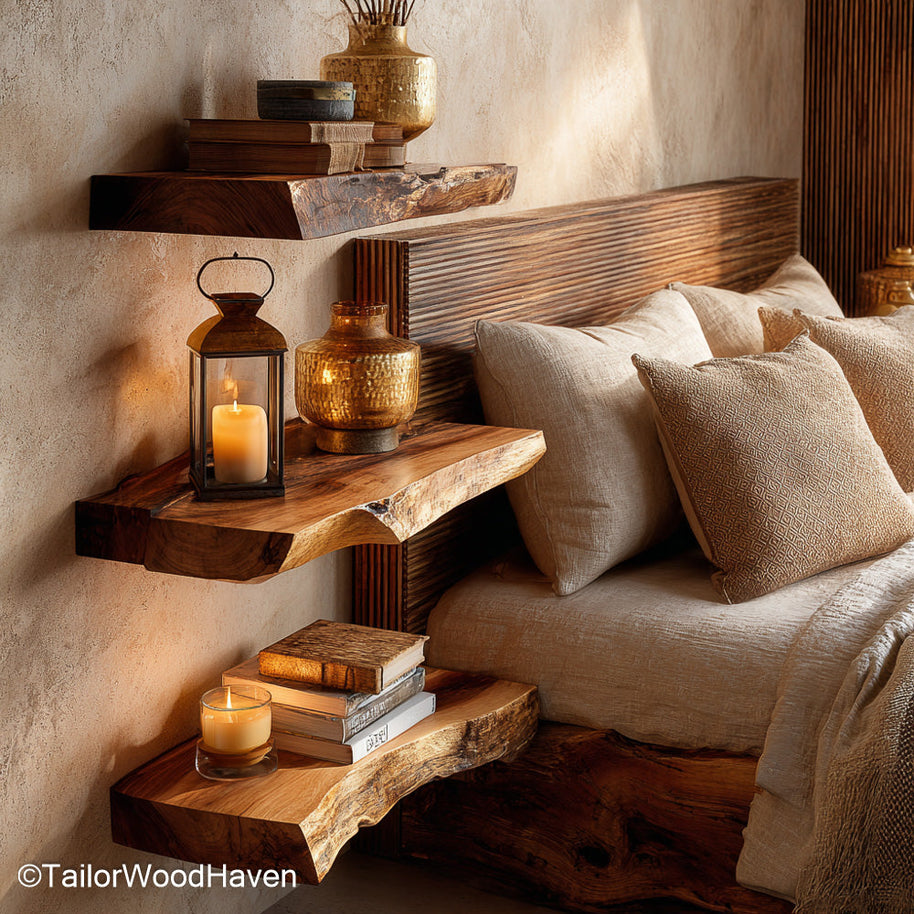
The deep, matte tone of this dark walnut floating shelf serves as the perfect, dramatic backdrop, ensuring your layered pieces and curated groupings truly pop and achieve visual balance.
What to Put on the Shelves
The best shelf designs mix function, nature, and personality. When learning how to decorate floating shelves, avoid using just one type of item. Mixing books, plants, photos, and decor pieces adds variety and makes your shelves more interesting and lively.
Daily Items
-
What to add: Matching ceramic mugs, glass jars for sugar or coffee, or bottles of cooking oil.
-
How to style: Group similar items together for a clean, practical base. Only display things you use often to avoid dusty, unused decor.
Natural Elements
-
What to add: Small plants like succulents, air plants, or ivy; stone decor; wicker baskets; dried flowers such as eucalyptus or pampas grass.
-
How to style: Mix natural textures with glass or metal to create warmth and contrast. A blend of materials is key to learning how to decorate floating shelves with depth and life.
Art, Books, and Personal Mementos
-
What to add: Books, framed art, photos, or meaningful gifts.
-
How to style: To add visual interest, stack some books horizontally to act as stands for small objects like candles or vases. Lean framed art casually against the wall for simple layering. Finally, add personal items sparingly to ensure the space looks curated, not cluttered.
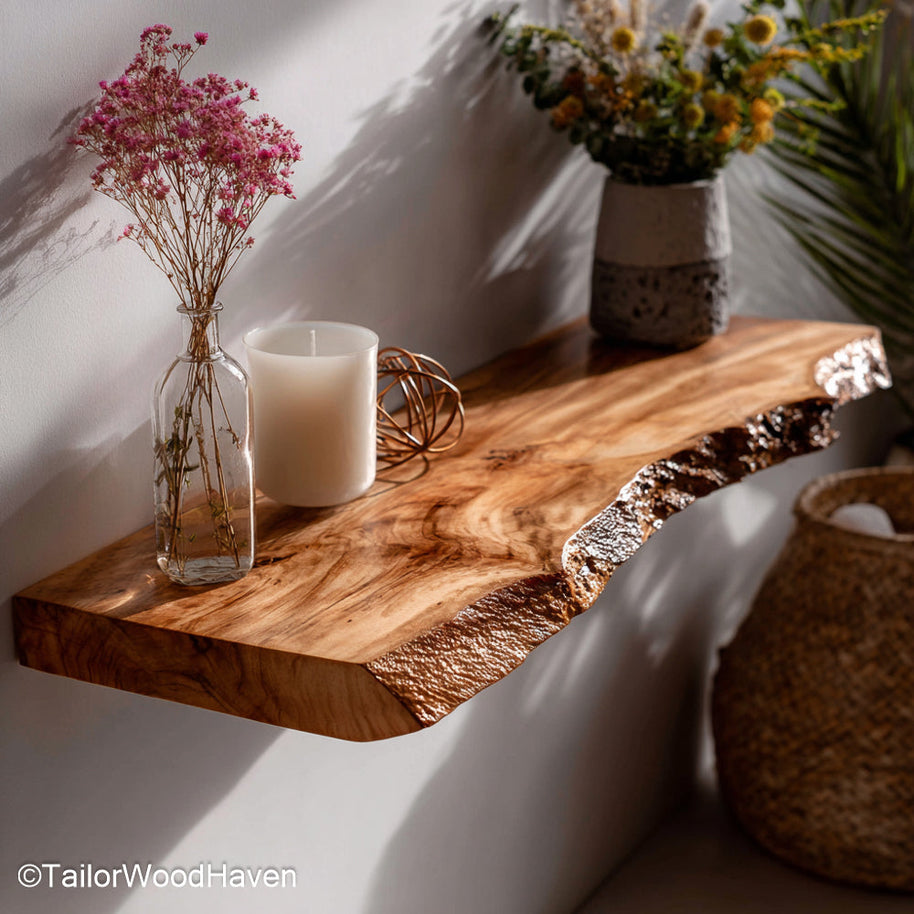
Start your layered display with a premium foundation; the deep, natural grain of this walnut wood floating shelf instantly provides the warmth and organic contrast essential for a designer look.
Advanced Styling: Color, Texture, and Theme
Once you master the basic principles, you can elevate your understanding of how to decorate floating shelves by focusing on cohesive design elements.
Developing a Cohesive Color Palette
A consistent color scheme makes any shelf setup look polished and intentional. Here’s how to apply it when learning how to decorate floating shelves:
-
Monochromatic: Use different shades of one color – such as white, cream, and beige – for a clean, cohesive look. Add texture with materials like ceramics, fabric, or wood to keep the display visually interesting. This simple style works perfectly for minimalist or calm, relaxing spaces.
-
The Two-Tone Rule: Start your display with a neutral base of white, black, or wood tones. Introduce visual interest by adding just one accent color, such as mustard yellow or deep teal. Make sure this single accent color is used consistently across various items to keep the entire shelf composition unified and cohesive.
Balancing Textural Contrast
Texture is key for adding depth, especially when you are using limited color. The best technique for learning how to decorate floating shelves is to combine contrasting materials. For example, pair smooth items like glass, metal, or polished ceramic with rough or organic materials like raw wood, woven baskets, or stone. This simple contrast immediately creates visual balance and interest in your display.
Changing Decor for Seasons and Holidays
Keeping your display fresh is simple and doesn't require overhauling the whole shelf. To master how to decorate floating shelves for different seasons, focus on the 80/20 rotation rule. Keep 80% of your main arrangement in place permanently. Then, quickly swap out the small 20% with seasonal items – like changing out a candle and dried stems for colorful gourds in the fall or evergreen cuttings in the winter.
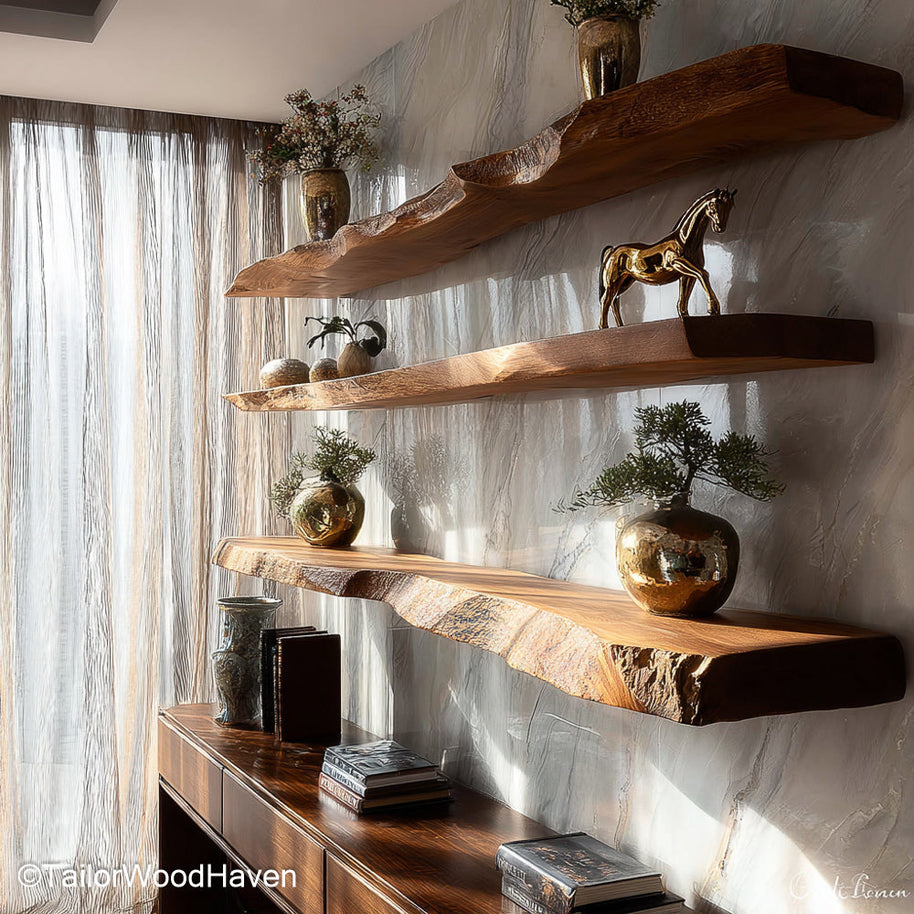
Your seasonal 20% changes will always look stunning against the timeless foundation, choose a walnut wood floating shelf for rich color and lasting quality.
Shelf Decor Ideas for Every Room
The room's function drastically changes how you approach shelf styling. Understanding this distinction is key to mastering how to decorate floating shelves so they are both functional and beautiful in every room of your home.
Living Room
Living room shelves are often viewed the most, so the priority is personality and visual detail. These areas can handle more complex, intricate arrangements. This is your chance to be most expressive in how to decorate floating shelves: focus on sculptural objects, framed family photos, and small, curated collections like travel souvenirs or vintage cameras.
Kitchen
For kitchen shelves, the main goal is utility and accessibility. Items should be easy to reach and simple to wipe clean. Focus on functional pieces like matching mugs, small bowls, attractive containers for coffee or sugar, and perhaps a small, stand-up cookbook. Make sure to avoid decorative items that will trap grease or dust easily.
Bathroom
Keep bathroom shelves sparse, simple, and sanitary. Store necessities like cotton balls and swabs in clear glass or ceramic jars. Add a small pop of green with a moisture-loving succulent and use neatly rolled white towels for texture. Always avoid clutter and anything that can be damaged by steam.
Bedroom
In bedrooms, shelves can express your personal style. Combine framed prints, books, and soft elements like a small vase of flowers or a diffuser. Keep the palette soothing and cohesive for a restful vibe. No matter the room, mastering how to decorate floating shelves is about balance – mixing beauty, purpose, and a touch of your own personality.
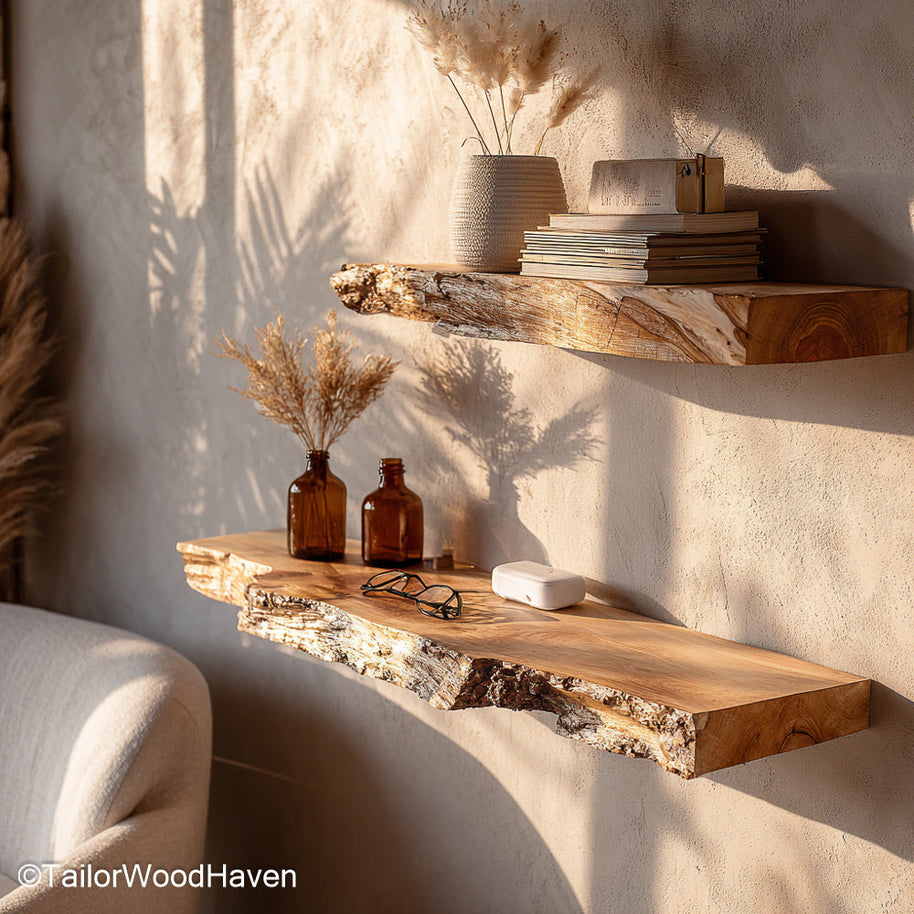
By styling each display according to its location, you can ensure your floating shelves are both functional and beautiful. To explore more shelf styling ideas and see visual examples, check out this guide.
Avoid Common Mistakes
Don't let simple errors undermine your efforts in learning how to decorate floating shelves. Here are the most common pitfalls:
-
The Clutter Trap: Avoid filling every space. If your shelf looks busy, follow the negative space rule and remove at least one-third of the items.
-
Ignoring Scale: Do not use pieces that are too small or too large. The item's height should generally be no more than two-thirds the height of the space above the shelf. Distribute visually heavy items evenly.
-
Lack of Variety: A straight line of similar items looks boring. Mastering how to decorate floating shelves requires mixing up directions: ensure you combine vertical items, horizontal stacks (like books), and sculptural pieces for a polished display.
Final Thought
The final result of learning how to decorate floating shelves is the beautiful display in your home. Success comes from the space you leave empty, the variety in your heights, and the careful selection of items that reflect your personal style. By committing to these principles of balance and visual weight, you have elevated your shelves beyond mere function. Enjoy the clean, intentional lines and the curated gallery you have successfully designed.

